A British F-35B Lightning II has now spent more than two weeks on the ground in southern India, after being forced to divert from HMS Prince of Wales and land at Thiruvananthapuram’s civilian airport on 14 June.
The aircraft had been operating as part of Operation Highmast, the Royal Navy’s flagship deployment of 2025, which sees the Carrier Strike Group conducting high-profile engagements and joint exercises across the Indo-Pacific.
The incident was raised in the House of Commons on 30 June by Ben Obese-Jecty, the Conservative MP for Huntingdon, who asked the government to clarify what was being done to secure the jet and return it to operational service. “What steps are the Government taking to recover the plane, how much longer will that take, and how will the Government ensure the security of protected technologies on the jet while it is in the hangar and out of view?” he said.
The response from Minister for the Armed Forces Luke Pollard confirmed that the aircraft remains under close UK control, with RAF personnel guarding it around the clock. “We continue to work with our Indian friends who provided first-class support when the F-35B was unable to return to the Prince of Wales when on a flight mission,” he said. “I am certain that the security of the jet is in good hands because Royal Air Force crew are with it at all times.”
While the cause of the incident has not been officially disclosed, it is understood that a technical issue prevented the aircraft from recovering to the carrier. The Indian Air Force and civil aviation authorities granted immediate clearance for the aircraft to land, and the jet was moved to a secure hangar at Thiruvananthapuram International Airport.
Engineers and logistics support teams have since been deployed to assess options for its recovery, though no timeline has yet been publicly confirmed.
The F-35B is the UK’s most advanced combat aircraft and central to its carrier strike capability. Although no sensitive systems are believed to have been compromised, the aircraft’s extended presence at a civilian location in a non-NATO partner country has prompted questions from MPs and analysts about operational risk, technology security, and resilience planning.
The Ministry of Defence has not made clear when the aircraft will return to service or whether it will be able to rejoin HMS Prince of Wales, which departed Singapore earlier this week to continue the eight-month Operation Highmast deployment. The aircraft remains under British military control at all times.


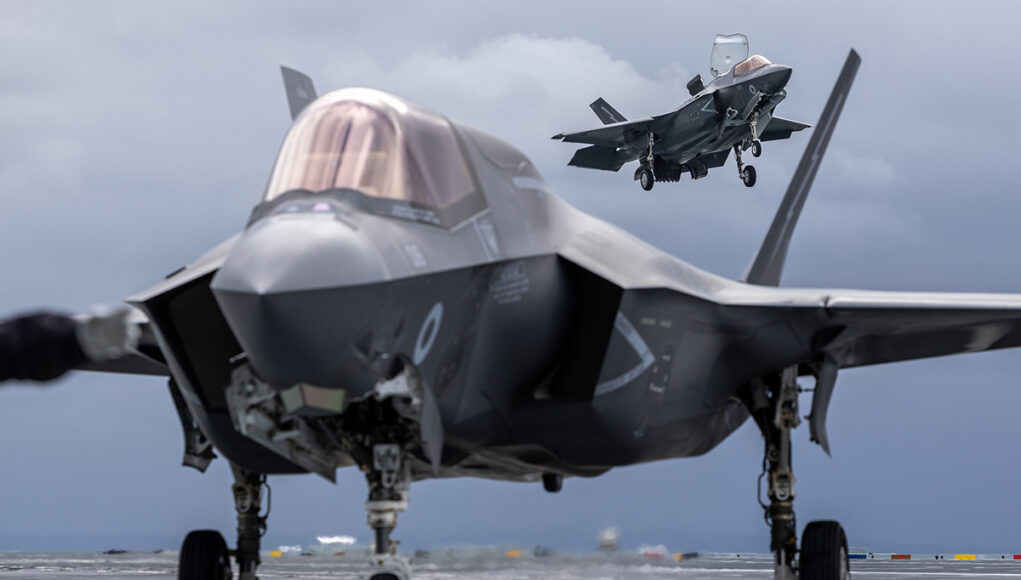
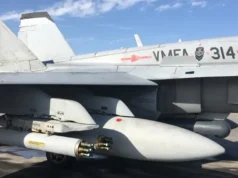

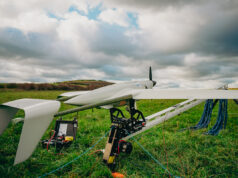
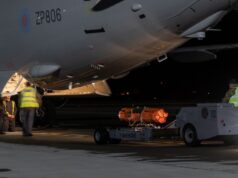
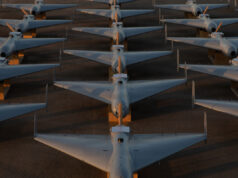
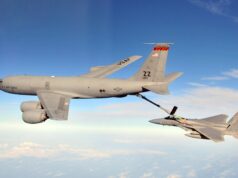
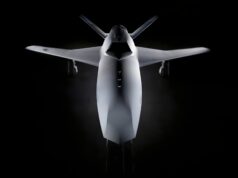

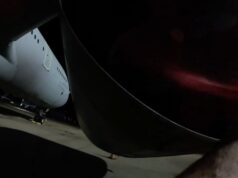
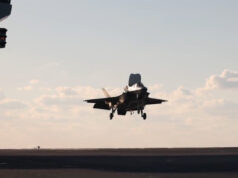

I suspect the security at an Indian civilian airport is higher than at an RAF base back in the U.K. so nothing to worry about.
2 weeks seems like a long time to make their mind up on either moving it to somewhere a c17 can pick it up or to a port for onward transport home. Wonder why they haven’t moved it.
They had three goes at fixing it with the techs that were Merlin’s over from PoW.
They then sent another team from Marham – presumably with more parts and test kit.
If the failed part is deep inside the frame then acessing it could be very hard.
Removing the wings is a rather nuclear option as the frame will require a full rebuild and certification. Which will take time and cost £££££
Removing the wings sounds a bit drastic and very expensive, I suppose another solution could be to ask if the USN can divert an LHA to India and after removing the engine lift it out with a CH53! and out to their Flight deck.
I seem to think the USS America is presently out that way and as they operate the F35B maybe they can even repair it. “Exercise Stranded Birdie” sounds nice.
It may be a bit embarrassing but on the other hand it highlights yet another gap in capability, we can’t refuel the A’s and we can’t recover a B without outside help.
Removing the wings is very drastic and likely needs the engine removed and other parts stripped first.
That would require a hangar to prep it.
Also when it is that disassembled it would be easier for people to take a look via say a concealed set of CCTV cameras. Or gain access to critical bits.
I also think that LM would have to be involved in that level of disassembly.
Failing that option, a call to USAF Transport for a C5 Galaxy ride to Marham via various friendly locations. No wing removal required.
Don’t believe that USAF would welcome any F35 security breaches so that’s a motivation to help..
Having been a aircraft technician for a lot of years I find it strange as well, obviously the F-35 is relatively new to the RAF and the experience level of the techies is very low compared to other aircraft types in service, the technology is probably the most advanced that the RAF have ever had to maintain, but, that doesn’t mean that they have any excuses for not fixing it or getting it back to the uk to be fixed, and if this is a defect that has not occurred to any F-35 before then surely Lockheed Martin should be giving the techies technical support either on site in India or via satellite communications with video link, whatever the case I don’t think we will ever know the exact details.
I’m wondering if this is some form of covert way of encouraging India to buy from the west and not Russia. A US ally doing it instead of US direct.
Just an interesting thought experiment,vi don’t believe it’s likely just possible
LOL.
Tbh I thought the exact same thing, but having done guard duties many times and at various locations in the United Kingdom and overseas I can confirm that it is probably better off where it is, unfortunately security at our military bases was not taken seriously enough and now we have proverbial egg on our faces, or should that be government because they were the ones who kept on cutting the budget for the armed forces.
Much more worrying that it is grounded for unknown technical reasons for so long. Sums up the F35 in reality, we’ll need twice as many given its superb availability rates. What’s not to like about this brilliant piece of kit, other than availability, cost, lack of integrated UK weapons etc…
Well, at least it aligns us with a credible ally – oh wait.
Trump is more Pro-UK than Biden and Obama ever were.
Looks like our boys are on it then. Better to change out the part/s than remove wings & bring home kit form.
Nothing to see here. Part needed clearly taking time to source.
Part is probably deeply buried within the frame.
I’d suggest the main hydraulic pump from how difficult this is being.
Is there a 5 Star Hotel there with a pool? MMMMMMM !
Good to hear RAF people remain with it.
That’s it, Time for the UKDJ Regular commenting “Top Brass” to spring into action and get that C17 fired up and off to India right away, the time for chatting is over, It’s time for action now.
“I only realised something was wrong in my teens”.
On the plus side it’s doing great things for Anglo Indian relations while putting a very large dent in the reputation of Lockheed Martin.
More Typhoons and crack on with Tempest, methinks.
Yes,
“That would go down a Storm”.
Nice one!
Embarrassing
Losing an F35 is becoming par for the course for a CSG deployment.
In the past, dedicated carrier borne aircraft were more robust and easier to fix than land based fighters, The F 35 isn’t.i wonder how long our small air wing would last in intensive operations.
Depending on your time frame of choice ‘in the past’ the Fleet Air Arm suffered a peace time aircrew and aircraft loss rate that would make this incident seem like a mere bagatelle. Indeed, this sophisticated and highly advanced aircraft type has been in UK service (in relatively small numbers admittedly) since 2012 with only one aircraft lost – and that was down to human error rather than a technical malfunction.
So keeping things in perspective before making sweeping statements would seem advisable methinks.
Quite right.
Just all part of the F35 bashing.
It isn’t the aircraft. It is the time we are seemingly happy to leave a sensitive bit of kit in a vulnerable position.
Certainly the Harrier loss rate, especially in the USMC, was much higher. The point I was trying to make was the need for carrier borne aircraft to be repairable on board. This is even more critical for the RN with its small air wing. We don’t know the full extent of the problem, but the sophisticated and highly advanced nature of F35, all versions, does require high levels of maintenance. All versions in US service have regularly failed to meet availability targets. UK F35Bs have not yet been used intensely so this latest incident must be a cause for concern.
Let’s hope this is a one off
There were historically some pretty dreadful FAA aircraft Supermarine Scimitar and Sea Vixen spring to mind.
I’d have to say that F35B doesn’t seem that bad although it is impossible to know without knowing total flying hours.
Can’t really compare it to Harrier – which has known accident statistics.
This is not unusual. Take a gander at the superb performance of the American CSG in the Red Sea.
You’ve never worked on a Sea Harrier, F14 or Phantom then. You’d soon change your tune. Aircraft being stranded in foreign lands from carriers is nothing new at all.
Just before digital media it was generally kept quiet about unless The Times Defence Correspondent was walking acorss the tarmac and spotted it…..
The other thing was that friendlies generally kept quiet about this kind of thing…..less so now.
Plenty of unfriendlies on the sub-continent , not just on social media…
This is a major issue. Combat kit needs to be able to undergo repair in the field. You will not always have the luxury of sending it back home to be repaired. Equipment has now become so complicated that field repair is not possible. As much as I hate to say it some things the Russians do have right in that they have more simplistic systems and possibly more crude construction but they can be fixed in the field which also means that they are going to be available for operations. We in NATO seem to have falling into the same trap of Nazi Germany in WW2 where they had some of the best kit available but not in enough numbers and prone to brakedowns. The allies did not have the best kit but they had it in numbers and would work even if it was not at its best.
If the issue is the hydrolic pump which needs a strip down to get to it it reminds me of the Toyota MR2 and the hose from hell, a full engine removal for a 50p three inch hose.
So the question is how the hell do we get the F35 back to the UK, take the wings off, send out a Bay/Argus/ Point. From the cost point possibly it would be better to return the aircraft by ship. Anyone know what the ganrantee period is for a F35B!
They can transport them via C17 if need be.
There is only one way the western world has to airlift an F35 without major surgery and that’s not long legged, it’s a Ch53K helicopter and we didn’t buy any !
Take the wings off and it will fit in a C17.
Ask USAF nicely to send a C5 Galaxy, don’t remove the wings, just take it back to Marham.
Still a much better result than Mediterranean salvage…
I saw an Indian news report where the alleged the Indian Airforce were cock a hoop that they could track it. Somebody should have told them that F35 doesn’t fly full stealth unless in a war scenario for obvious sensible safety reasons.
Oh goodnas glacious mee.
“It ain’t aff ott”.
Not exactly the best time to holiday in India at this time of the year but beggars can’t be choosers.
Is it under Indian or U.K. guard.?
The Indians ain’t the brightest. Another bunch claimed it was spying on their navy. A Cessna would be all that’s needed for that!
“The Indians ain’t the brightest”
Try telling that to Custer.
“Where did all those bloody arrows come from”.
Is it now just out of warranty?
So recovering a jet from the bottom of the sea was faster than recovering one from India?
Fantastic stuff 👏
This was my point the other day.
There was a bit of a panic incase Russia China got there first, at the bottom of the ocean.
A country like India, friendly with Russia? No worries.
I understand they didn’t want to appear panicked during the first day or two, but this is taking the piss now. A decision to recover it should have been made more than a week ago.
Actually, I see what HMG are doing here…
Instead of spending the money and placing an order for 27 F-35s, they’ve clearly been looking for a way to quietly walk away from that ‘commitment.’
So rather than announcing another reduction outright, they’re sending a clear message to the U.S., LM and the wider world that the UK can’t be trusted with anymore jets.
It’s a clever move: by making themselves appear untrustworthy or unpredictable, they’re effectively inviting exclusion—perhaps even hoping to be put on the ‘naughty step’ like Turkey.
They’ve played a blinder.
Stop that, stop that sillyness right now.
This is a deadly serious commentary section for deadly serious comments only.
“I mentioned it earlier, think I got away with it”.
Four thirds of comments are whinging about HMG or Trump.
I put my comments Bottom third of the fourd third.
“However, it is worth coming here for the two thirds”
I’ve only made it to Half way so far.
“They think it’s all over”.
Well at least we have mastered securing them to a deck and I don’t exactly see how the aircraft sitting on a frenemies runway in any way makes us untrustworthy.
The aircraft is out in the open, under guard. Even if it is the Indian air forcing guarding it. They
A) won’t want to piss us off
B) there will be a special forces team keeping an eye on it.
All the stealth tech will be kept turned off . Anyone trying to track it leaving will get nothing except the radar enhanced transponder . Eg a fake signature.
I understand the RAF Regiment considers itself part of the ‘Big Three,’ but have they really escalated this to claiming special forces status now?
I was referring to one of the big three .
Although the RAF regiment could happily go toe to toe with the marines or the paras. They are def not up to the sneaky stuff.
Ha ha ha mate get a brew. Toe to toe with maybe the Army Cadets and the Reserves!
Are these the same RAF crews that were guarding the two Voyagers that got painted…
The LM sales team responsible for selling the F-35 to the Indian Air Force must be spitting blood with this inconvenient example of a maintenance issue causing a big problem on Indian soil. No doubt the LM team try to turn the situation to their advantage showing the depth of support one of their customers gets by rustling up a Ch53K at the right moment. Trying not to draw the conclusion that if the IAF buys the F-35 it may also need the Ch53K.
I suspect that our F-35 is stuck there until the PoW makes its way home, assuming it comes this way and sees the pilot with his thumb out hopefully as if he was on the A3.
Like I said before maybe best if HMG have a word with MR Trump .If this was an US aircraft it would of been back in there hands within less than 24 hours .
Couldn’t agree more — ‘Daddy’ would’ve had this sorted in a day. Maybe it’s time we cut our losses and ask for help.
Might be a bit embarrassing, but something needs to happen, and soon.
Only USAF has the C5 Galaxy so this plays into #47 “The greatest anyone has ever seen” ..
Unusually he would be accurate 😂